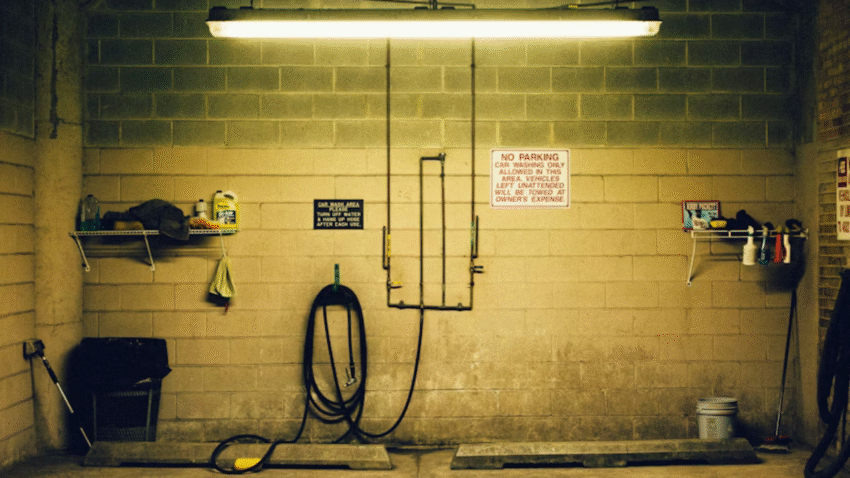Introduction
Good lighting can make all the difference in how you use your garage. Whether you’re working on projects, parking your car, or simply finding stored items, bright, efficient lighting is essential. Learning how to install LED lighting in your garage will give you a brighter, more energy-efficient space that’s easier and safer to work in. LEDs last longer, use less power, and provide better illumination than old fluorescent or incandescent fixtures.
Why Installing LED Lighting Matters for Your Garage
Upgrading to LED lighting is more than just a cosmetic change—it’s a smart investment:
- Energy efficiency: LEDs use up to 75% less energy than incandescent bulbs.
- Long lifespan: Many LEDs last 25,000–50,000 hours, reducing replacement costs.
- Better brightness: LEDs offer crisp, clear light with various color temperatures for different tasks.
- Instant-on: No flickering or warm-up time like fluorescent lights.
- Low heat output: Safer and more comfortable in enclosed spaces.
With proper installation, you can transform your garage into a well-lit, functional area for any activity.
Step-by-Step Guide to Installing LED Lighting in Your Garage
1. Choose the Right LED Fixtures
LED lighting for garages comes in several styles:
- LED shop lights: Long, tube-style fixtures ideal for workbenches and general lighting.
- LED ceiling panels: Great for even light distribution.
- LED strip lights: Flexible and useful for accent or task lighting.
- Integrated LED fixtures: All-in-one units that don’t require separate bulbs.
Pro Tip: For garages, aim for at least 50 lumens per square foot for bright, clear illumination. A standard two-car garage (about 400 sq. ft.) will need roughly 20,000 lumens total.
2. Gather Tools and Materials
You’ll need:
- LED light fixtures
- Mounting hardware (usually included)
- Drill and bits
- Screwdriver
- Wire strippers and cutters
- Electrical tape and wire nuts
- Ladder
- Voltage tester
- Safety gear: gloves and safety glasses
If hardwiring:
- Electrical cable (Romex or similar)
- Junction box and cover plate
3. Plan Your Lighting Layout
- Decide how many fixtures you need based on garage size and lumens required.
- Place lights evenly to reduce shadows—install more above work areas.
- Measure and mark fixture locations on the ceiling or walls.
- Consider existing wiring—using existing electrical lines can simplify installation.
Pro Tip: For maximum efficiency, position lights perpendicular to your main workspace to reduce glare and shadows.
4. Turn Off Power at the Breaker
Safety first—always turn off the circuit breaker for the garage lighting before working on wiring. Use a voltage tester to confirm power is off before touching any wires.
5. Remove Old Fixtures (If Applicable)
- Unscrew and disconnect old light fixtures from the ceiling or wall.
- Cap or tape exposed wires until you’re ready to connect the new LEDs.
6. Install Mounting Hardware
Most LED fixtures come with brackets, chains, or mounting plates:
- Drill pilot holes where you marked fixture locations.
- Attach brackets or hooks using screws and anchors if needed.
- For chain-mounted shop lights, secure the chains to the ceiling joists for stability.
7. Wiring the LED Fixtures (Hardwired Option)
- Prepare Wires: Strip about 1/2 inch of insulation from each wire end.
- Connect Wires: Match the black (hot) wire from the fixture to the black wire from the power source, and the white (neutral) wire to the white power wire. Connect ground wires (bare or green) together.
- Secure Connections: Use wire nuts and wrap with electrical tape for extra safety.
- Attach Fixture: Secure the LED fixture to the mounting hardware.
Note: If your fixture uses a plug-in design, simply mount it and plug it into a ceiling or wall outlet—no hardwiring needed.
8. Test the Lighting
Once everything is mounted and connected, restore power at the breaker. Turn on the switch to test the lights. If they don’t turn on, double-check your wiring connections and ensure the fixture is properly secured.
9. Adjust for Optimal Lighting
- Rotate adjustable fixtures or panels to focus light where you need it most.
- Add LED strip lighting under shelves or above workbenches for task-specific illumination.
Common Mistakes to Avoid
- Mistake: Skipping the power shut-off.
Solution: Always turn off the breaker and verify with a voltage tester before starting. - Mistake: Choosing the wrong lumen output.
Solution: Calculate lumens based on garage size and intended use—too dim and your space won’t be functional. - Mistake: Poor fixture placement.
Solution: Space lights evenly and add more above work areas. - Mistake: Overcomplicating wiring.
Solution: Use existing wiring when possible or hire an electrician for complex installations. - Mistake: Not securing fixtures properly.
Solution: Use the right anchors and mounting hardware for your ceiling type.
Extra Garage Tips & Hacks
- Install Motion Sensors: Automatically turn lights on when you enter, saving energy.
- Choose the Right Color Temperature: 4000K–5000K provides bright, daylight-like light that’s ideal for garages.
- Combine Lighting Types: Use overhead LEDs for general lighting and LED strips or task lights for focused work.
For more garage upgrades, see our guide on How to Install Wall Panels in Your Garage for a complete functional makeover.
Conclusion
Installing LED lighting in your garage is a straightforward upgrade that greatly improves visibility, safety, and efficiency. By choosing the right fixtures, planning the layout, and following proper installation steps, you can create a well-lit space for any activity.
Final Tip: Don’t be afraid to invest in high-quality LED fixtures—longer lifespan and better performance mean fewer replacements and better lighting for years to come.
CTA: Bookmark this guide and use it when you’re ready to brighten up your garage with modern, efficient LED lighting.
